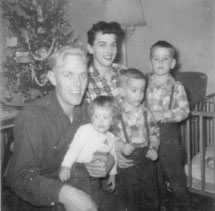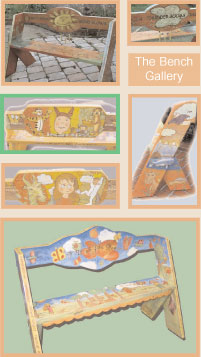 |
||||||
 an excerpt from the novel "The Truth About Rocks" I’ve had my hands in concrete so much this week, the grit has buffed my fingertips to a shine. I can’t hold on to anything and no longer have fingerprints, which would come in handy if I was a criminal, but I’m not a criminal, no matter what they say. Guess I should fill you in: continue "THE TRUTH..." an excerpt from the novel “I Love Iliff” I knew God was up there watching us, looking after Mom and Dad and Chick and Matt and me. Making sure we were safe and taken care of and nothing bad would happen. Looking after us first, our family, because we were the center of things. God used us to show everyone else how things were supposed to be. God felt about me the way I felt about Lynn. I loved her and took care of her. Couldn’t have a better baby doll. But I didn’t tell anyone else about God and me. Because how would Grace have felt to know God liked me best? Grace was tiny and wore fuzzy tights and a gathered black skirt and an orange fuzzy sweater with long hairs that made her look like a fox, a pretty fox like the one Dad and I saw run across the hayfield. When the bell rang for recess, Grace and I would hurry out the door, hold hands and skip down the hill to the corner of the school yard, then build houses for ladybugs under the big tree. How would Grace have felt if she knew that The Nichols were God’s main family? I kept that secret to myself. But sometimes I thought about it at school. Sitting in the first-grade row, three seats back, facing the blackboard that was a great night sky across our classroom with the alphabet cards, white letters on green, running above it. I faced forward – North -- which meant the hand on the Z side is my right, the hand we’re supposed to raise when we need help. I thought about God sometimes when the third and fourth graders went up front for lessons, when I was done with all my work and had time to think. God and eternity. I listed the months, January, February, March… and imagined the whole school year ahead at once. As if time was laid out on an invisible walkway heading up like the truck ramp at the feed mill. My ramp started on Teacher’s desk by the tiny wooden dog alongside her pencil cup and ran through walls, day after day, month after month, angling through the blackboard across the Rec Room out the schoolhouse ringing the school bell into next year and beyond. I thought about God at night when I looked out my window and saw the full moon. When I heard the barn owl but couldn’t spot him. I was sad for the owl, how he could turn his head around in a circle but couldn’t tilt it back to see the moon. I wondered if he was laying on his back somewhere staring up and thinking like me. I thought about God, but I didn’t talk about him at school or at home. Sister Anne talked about him at Saturday Catechism, and if we went to church like Catholics were supposed to, I’d know more. At Catechism, The Sister said he was three people at once and he was everywhere. I didn’t get that but I knew he was some places like that picture on the wall in Mom’s room and the cross in the hallway. God came up every night before supper. We closed our eyes, Mom, Dad, Matt, Chick and me. Matt didn’t close his eyes or even squint and pretend. It was a habit from when he was a baby. Matt started bawling in church, the priest stopped talking and glared until Dad walked him out, which was the last time Dad, who became a Catholic for Mom, went to church. But we still said a prayer before meals. Except for Matt. Matt folded his hands to make a little barn like the rest of us but didn’t bow his head. Most times he didn’t take a turn saying the prayer, the only thing he didn’t want two turns at. At school we kept our prayers to ourselves. The main thing I said thanks for was art. The blackboard in the Rec Room had a chalk drawing of a tree with pumpkin-colored leaves and a mother hen with chicks in a row. There was another drawing on the blackboard in the schoolroom next to my row. Teacher drew a new picture every week and wrote a rhyme alongside. I liked to get there early and watch her chalk move free. One day, I said, “I like the roses beside the sheep, Gram,” but corrected myself right away. Gram would sometimes draw pictures in her letters, but not like Teacher. And Dad did drawings too but no one I knew drew pictures like Teacher. She drew a man, dark outlines of color, then used sideways chalk to fill it in. It was wondrous … wise, he jumped into a bramble bush and scratched out both his eyes. But when he saw his eyes were out, with all his might and main, he jumped into another bush and scratched ‘em in again. Dark spiky thorns and dabs of black raspberries surrounded that man. On days we didn’t have school, Peppy and I were free. Actually Peppy was always free because he didn’t have school responsibilities. He didn’t spell ‘dog’ frontwards during class and backwards (with a capitol G) at recess like me. Actually I never figured out what Peppy did with his free time. Not counting that one clue, which had to be an expection as it was a side I’d never seen before -- and almost missed when I did see it, because the long skinny tail coming out his mouth was black like his lips. If you call what’s around a dog’s mouth, lips. That dead mouse could have dropped into his dog dish out of nowhere. Probably the three-legged Tom Cat or a chicken hawk did it, and Peppy gobbled and swallowed without chewing. Some things you can’t explain. I’m thankful he didn’t choke, which can happen if a dog takes too big a bite of a chicken bone, for example. Usually the drumstick’s the problem with that sharp needlestick poking up right beside. All I know is, when Peppy and I were together, we made fun out of nothing and we didn’t hurt anything to do it. We walked in the pasture and ran in the fields and I could feel my name, Breese, like the wind only spelled different. For more on "I Love Iliff", email gjeidy@soclever.com.
Gail Jeidy |
TOUCHDOWN H.O.G. LILY AND IRIS RETREAT DABBLING All properties are original and registered with the Writer’s Guild of America (publications) I can't stop writing because when I'm not concentrating on words and ideas, my mind wanders to subjects unworthy of my attention. Things like stray socks. Instead of writing, I calculate the hours I spend each year sorting socks, multiplied by the number of years I've been doing laundry, magnified by the number of my offspring, adding a bonus for the fussy ones tween-aged and older plus a few for the boomerang adult and his friends.  The hay-sock-stacks on my laundry counter become props in my memory game, "Life Socks!" It's similar to the picture game my once five-year-old whomped me at every time: three or four matches and my brain is mush. The rules of "Life Socks!" are: leftover stacks get swept into a wastebasket every six months; occasionally you snag back a loner to match a clinger found inside a shirt; and sometimes stray stacks linger longer. The other day, I said good-bye to toddler anklets with a daisy on one cuff and a butterfly on another. That was the day my once-toddling-memory-whiz- kid turned 10. The hay-sock-stacks on my laundry counter become props in my memory game, "Life Socks!" It's similar to the picture game my once five-year-old whomped me at every time: three or four matches and my brain is mush. The rules of "Life Socks!" are: leftover stacks get swept into a wastebasket every six months; occasionally you snag back a loner to match a clinger found inside a shirt; and sometimes stray stacks linger longer. The other day, I said good-bye to toddler anklets with a daisy on one cuff and a butterfly on another. That was the day my once-toddling-memory-whiz- kid turned 10.This drills down to three truths. Socks are a problem. I need to get out more. I can't stop writing. First things first: simple white socks. No pair's the same. Crew tops, low tops, socks with gray heels, yellow heels, gray heels and gray tops, yellow heels with yellow toes. Varying degrees of white, mother of pearl and gray. Big swooshes and mini-swooshes with a black stripe. Or three black stripes. Little girl socks with teal or pink or yellow thread at top, others with a pompom on the back, others with the purple pompom cut off because pompoms are nerdy. How I feel about socks on any given day is an indicator of where I'm at in my writing life. Some people get their undies twisted in a bundle over cluttered papers. Socks get me undone. (And mops with mismatching replacement sponges. Don't get me started there.) This says a lot about focus and some days it does become about paper. The newspapers and reports and articles with sweet language to work into my novel or screenplay or essay or poem. Recently, I poured over a tower of things I'll read someday feeling proud to have reached the bottom of the pile on one surface in one room, when I came across an artist profile from a Taos gallery I visited recently. (I do get out sometimes.) Peggy McGivern was the artist, and her wildly emotive painting redrew in my memory. Loose, sweeping strokes of color depicted a pensive, melancholy woman alongside a windswept clothesline of billowing sheets and animated garments. Distorted and dreamy, figurative and landscape at the same time and roughly mid-point on the clothesline a tiny article of clothing, hence the title: "Red Striped Sock." I think there was just one. Perhaps life wasn't meant to be all tidy and matching. Perhaps facing the page each day is precisely what I need to sort it all out. - gj Why I'm a Sustainable Writer The mail carrier, in brimmed hat with a shower-cap cover, slogs up our steps and shoves the bundle through our too small slot. He doesn't have a particularly sunny disposition, but who would, wearing a pack load of letters in weather like this. 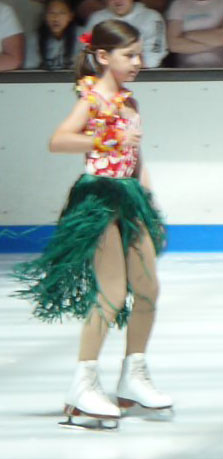 Wonder if one's for me. I grab the mail and stand by the picture window cradling a Smithsonian/New Yorker taco and let my fingers walk through mailers trumpeting amazing new products I don't want or need. Smart, simple solutions for problems I didn't know I had. What I want, I can't seem to buy, and if I read about another choice, I'm going to puke, wretch, vomit. There is no letter from the editor here. Just another solicitation, what's this? Sustainable. Now that makes sense. continue "The Sustainable Writer"  Art
ArtMy son Robert gave me the vase when he was seven. He made it at school out of clay -- a cylindrical vessel, about four inches high, with a curved handle up top. Gray green with scored lines criss-crossed all around. This childhood art object has been a treasured object on my kitchen windowsill for 16 years. When we moved about a decade ago, it came with us and found its rightful home on my new window ledge. An altar of sorts. My vase holds tiny flowers in spring, which never last because the depressed thumbprint of a seven-year-old forms a pool under the handle so miniscule it holds a scant half-thimble of water. So strawflowers are best. Purple ones go good with green. They last forever as long as I take care when I dust. Last time I dusted, I pulverized the flowers by accident, and I was being careful. I have to be, otherwise I’ll smear the details. Modeling clay isn’t designed to be permanent. And while I’m coming clean, my vase isn't really a vase. I've known this for some time. Robert told me the cold, hard facts when he was 10: "It’s a hand grenade Mom. Why do you put flowers in a hand grenade?" Perhaps I didn’t want to hear it; maybe I don't care. He made it; he gave it to me. It is mine. It will rest on my windowsill as long as I am. This June Robert turned 24. He gave me a CD of his original music because that's what he's doing now. Creating rap and hip hop beats. Loud, sometimes raucous expressions of his soul. I hear flowers. -gj What I do when I’m not writing A couple decades ago, I attended a film conference where producer David Lynch was asked what he’d been working on. He rambled on about his current film projects and concluded with, “and I built a shed.” Many in the audience didn’t quite get the tagged-on clause, having forgotten the question that prompted it 10 minutes earlier, but I found the tidbit delightful. 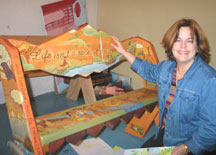 I thought about Lynch’s answer this past January. Even for puddle-savvy Oregon webfeet, the month was a tough one: a series of dank, drab days filled with more rain than any other month in local history. My success is that I survived not only intact, but in a bright frame of mind. How? By hiding out several hours each day in my full-spectrum basement “studio” engaged in the project shown here, hereafter referred to as The Bench. I thought about Lynch’s answer this past January. Even for puddle-savvy Oregon webfeet, the month was a tough one: a series of dank, drab days filled with more rain than any other month in local history. My success is that I survived not only intact, but in a bright frame of mind. How? By hiding out several hours each day in my full-spectrum basement “studio” engaged in the project shown here, hereafter referred to as The Bench.continue "What I do when I'm not writing" back to top |
|||||
|
|
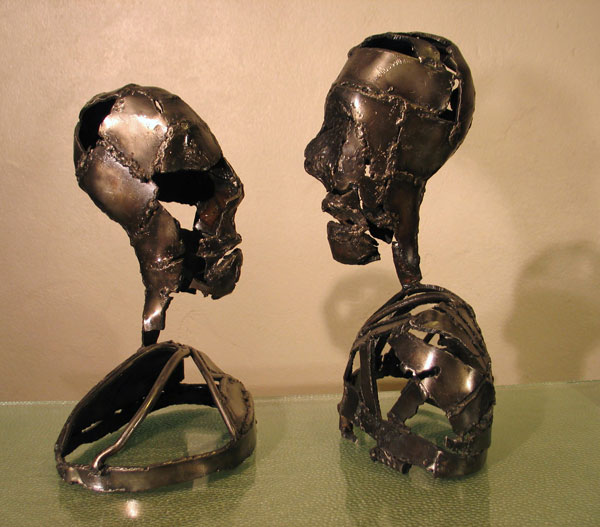 find ron |
|||||
 In Arithmetic, we added and subtracted. I finished early so I drew on the other side of the red fence line, away from my arithmetic problems. Peppy. Then a smaller Peppy and a couple teensier ones. A pile of Peppy puppies, hungry ones.
In Arithmetic, we added and subtracted. I finished early so I drew on the other side of the red fence line, away from my arithmetic problems. Peppy. Then a smaller Peppy and a couple teensier ones. A pile of Peppy puppies, hungry ones. 